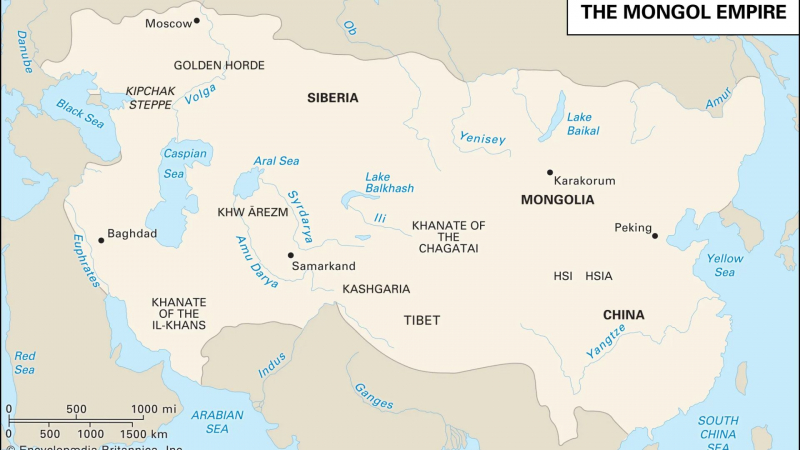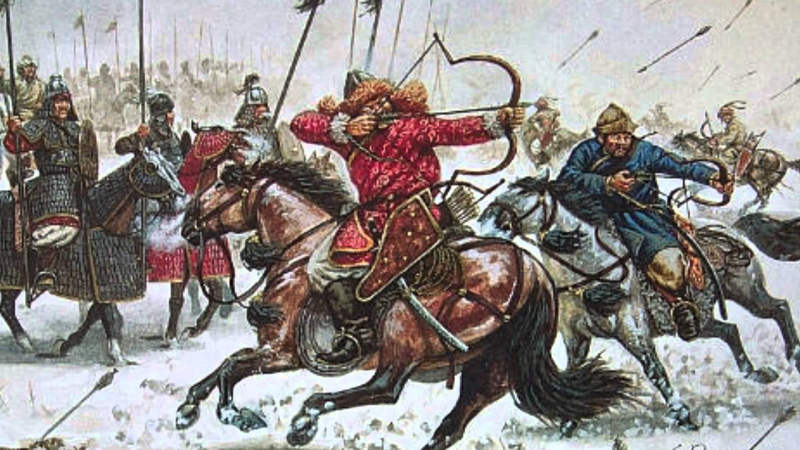Mongol Empire

Both Asia and Europe were part of the Mongol Empire. In actuality, it dominated the former during its height. Genghis Khan's leadership of the Mongol tribes at the beginning of the 13th century marked the beginning of the empire. The empire eventually held sway over most of China, Central Asia, and a sizable portion of Eastern Europe within the span of around fifty years. The frontiers of the Mongol Empire reached their greatest extent in the middle to late 13th century, spanning 24 million square kilometers from the Sea of Japan to western Asia Minor (Anatolia, modern-day Turkey). It was the largest contiguous land empire in history.
Genghis Khan (c. 1162–1227), who was recognized by a council in 1206 as the head of all Mongols, led the unification of many nomadic tribes in the Mongol heartland to become the Mongol Empire. Under his and his successors' leadership, the empire expanded quickly as they dispatched armies of invasion in all directions. In an imposed Pax Mongolica, the huge transcontinental empire linked the East with the West, the Pacific with the Mediterranean, and allowed the movement of trade, technologies, goods, and ideas throughout Eurasia.
The Ilkhanate, which fell apart between the years of 1335 and 1353, was the first component of the empire to collapse. The Yuan dynasty then fell and lost control of China proper in 1368 after the Han-ruled Ming dynasty seized control of Dadu, the capital of the Yuan. The Yuan's Genghisid emperors then withdrew to the north, where they kept control of the Mongolian Plateau. After it, the government became known in history as the Northern Yuan dynasty. By the end of the 15th century, the Golden Horde had split into rival khanates. The Grand Duchy of Moscow destroyed the Golden Horde and drove it from Russia in 1480, while the Chagatai Khanate persisted until 1687 in various forms.











